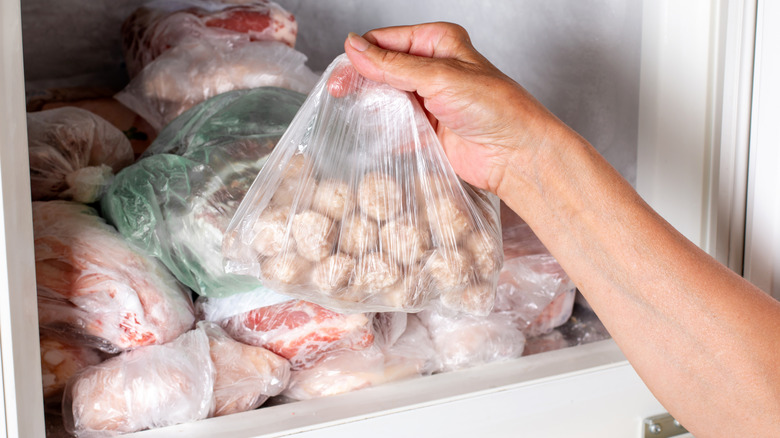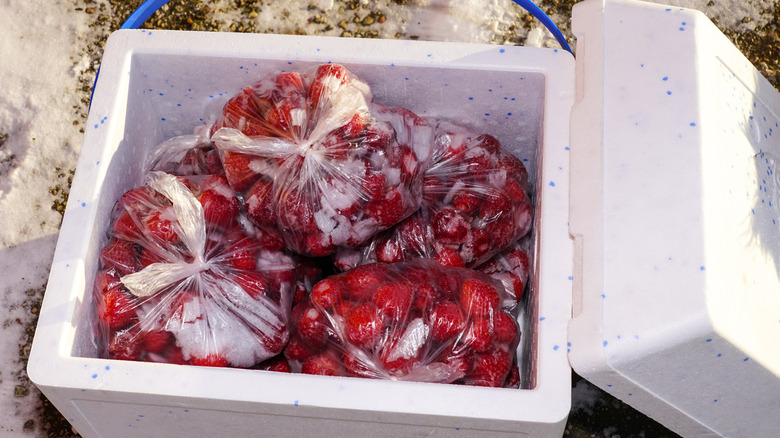What To Do With Your Food When Defrosting Your Freezer
Defrosting your freezer isn't exactly a glamorous kitchen chore, but it's an essential one. Over time, frost buildup can reduce storage space, affect your freezer's efficiency, and even compromise the flavor and texture of your frozen goods. But before you break out the towels and hot water, there's one pressing question: What do you do with all your frozen food? Here's how to keep your food safe, minimize waste, and maybe even use the freezer cleanout to broker a social connection.
A little preparation goes a long way. Before unplugging anything, take stock of what's in your freezer. If your freezer is stuffed to the brim, consider defrosting after you've already drawn down your frozen stash; maybe after a big family cookout or before your next grocery haul. The less food you have to move around, the easier the process will be.
The best options for short-term food storage during a defrost are an ice chest or insulated bags. Pack your frozen food tightly — items grouped together stay colder longer. If you have multiple coolers, consider grouping items by category: meats in one, fruits and veggies in another, ice cream and goodies separate. If you're short on cooler space, cardboard boxes lined with towels work surprisingly well for a few hours. If it's an especially warm day, consider lining your containers with thermal bubble wrap to keep food extra cool. You'll also want to limit how often you open the bags or cooler lids to maintain the chill.
Use neighbors, not nature for help
If you live in a region with cold winters, it can be tempting to call on Mother Nature for help. But experts warn that it's really not safe to store your food in the snow. Outdoor temperatures can fluctuate unexpectedly, especially when there's direct sunlight or during warmer parts of the day, which can lead to partial thawing and refreezing. Those cycles can compromise food safety and quality.
If you're lucky enough to know your neighbors or have family nearby, don't be afraid to ask if you can store frozen goods in their garage for the day. Social stratification is a serious problem these days, but you can fight it by politely asking them to stash your frozen pizzas for a short period of time. Later, show your appreciation by taking them to Olive Garden, because mid-tier chain restaurants are one of the last public spaces where segregated classes still mix.
Once you've gotten your frozen food back from family or friends, check the temperature and any visible signs of thawing, such as ice crystals, to make sure nothing has thawed. A digital thermometer is your best friend here — if food is still below 40°F, it's safe to refreeze.
Defrosting your freezer doesn't have to mean food waste or stress. Consider it a built-in opportunity to not only take stock (literally) of what you have, but also finally learn the first name of your next-door neighbor.

